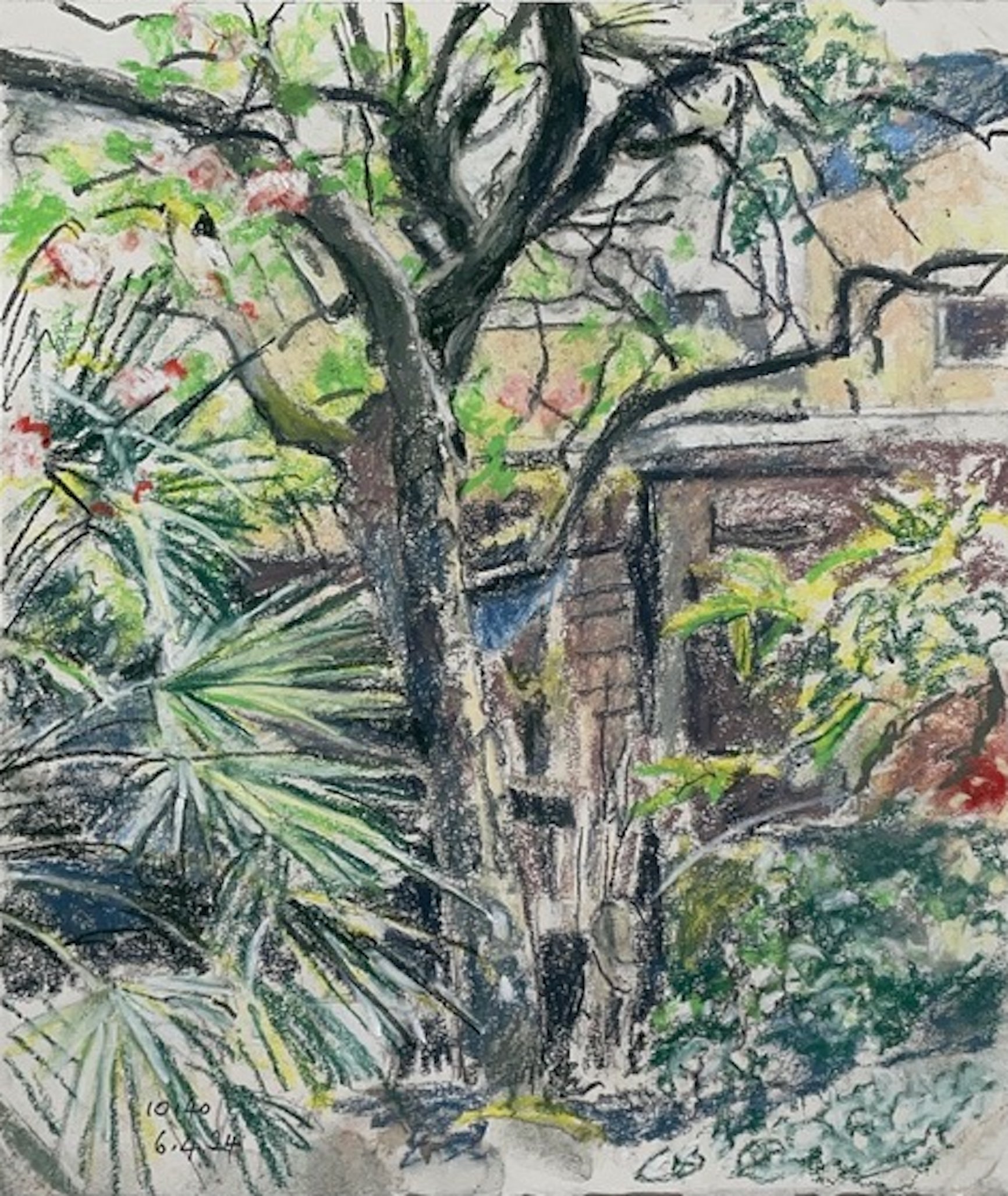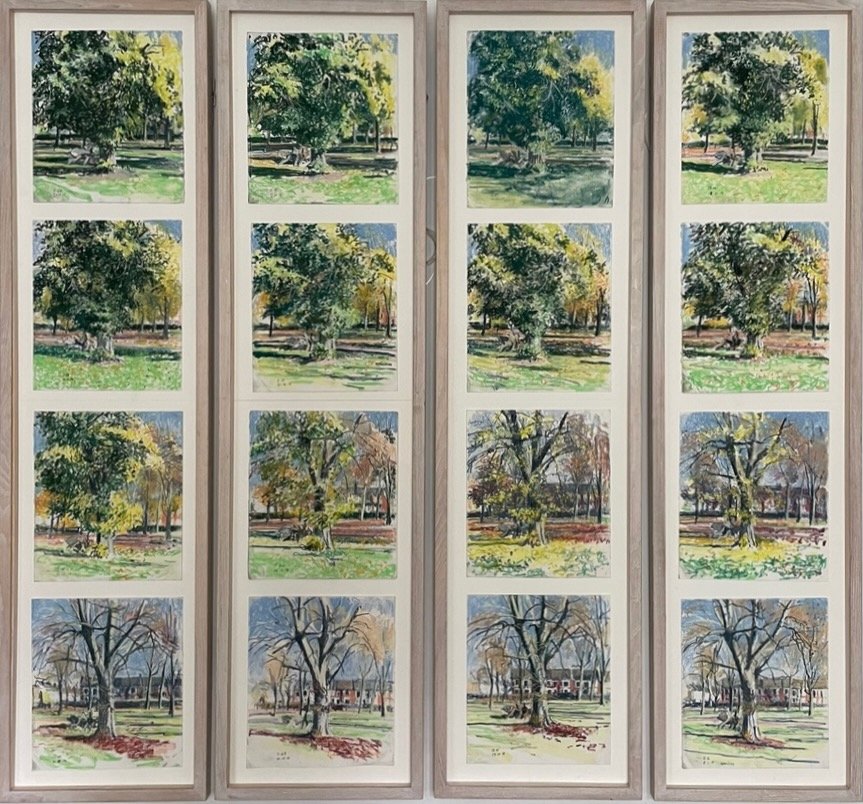





jb@johnblandy.co.uk
johnblandy.co.uk
Instagram john2art
John Blandy ‘follows’ particular trees through time; a source for developing ideas through observation and repetition. Over the course of a year, he returns to the same site time and again, always working en plein air, directly from his subject. His most extensive project to date, is ‘Following a Lime Tree’, in Queens Park, London 1997-2020 comprising over 4000 images.. The sequence of works become a longitudinal portrait of the tree, charting the changes through time.
Blandy’s current project is ‘Following an Apple Tree’ . Begun in lockdown in March 2020, it is based in a London garden.
‘In early May when the leaves break, or in late October as they fall, I stand at my easel, day after day; working in a manner that is open to idiosyncrasies of each moment as the shadows turn, the wind gusts, and a rain cloud spits. Painting in pastel I can respond to the changes on the spot as they occur. The size of the paper, the medium, the range of colours, form a framework for the marks, and help convey a sense of immediacy.’
As Artist in Residence at Wytham Woods, an ecological research facility of Oxford University, Blandy followed five iconic trees in the Woods over a five year period. He studied the Broad Oak, the Hornbeam at Gibsons Gate (before it was felled by a gust of wind); the Beech Tree opposite the Chalet; and the Ash Tree suffering die-back on Rough Common. The residency culminated in an exhibition in 2021 ‘Pillars of the Forest’, at The Barn Gallery, St John’s College, in association with Wytham Woods, Oxford University.
John Blandy graduated from St Martins and the Royal College of Art. Represented by Francis Kyle Gallery (1983-95); Cassian de Vere Cole (2001-2003); he currently represents himself. His work is part of many private and public collections, including Hammersmith Hospital and St George's Hospital, Tooting.